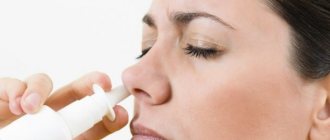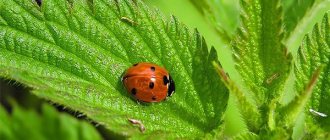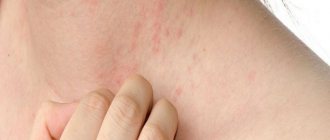About 20-30% of all humanity suffers from an allergic reaction to foreign elements. The source of irritation can be anything: pollen, cosmetics, or pet hair. The use of medications in this case is not the best option; the fact is that pharmaceutical products do not cure the disease itself, they only eliminate the external manifestations of symptoms. Long-term use of medications is especially harmful, since it can lead to disruptions in the functioning of the kidneys, liver, pancreas and a general deterioration of the immune system. Therefore, medicinal herbs for allergies are very popular.
Allergy sufferers can use various treatment methods.
It is important to know that chemicals (pharmacy drugs) are not the best solution. They only externally eliminate the symptoms of the disease, without curing the main cause and leading to even more serious disturbances in the functioning of the immune system. Temporarily suppressed physical symptoms soon return.
These disorders can be completely corrected with the help of herbs. Herbal medicine uses plants with antihistamine and cleansing properties. If the patient has an exacerbation of allergies, it is necessary to use herbs containing substances with antihistamine action. Such remedies will relieve the symptoms of the disease. Then, using a blood purifying plant, we remove allergens from the body. It's a slow process, but effective.
Please note that treatment of allergies, for example, in children, pregnant and lactating women, proceeds a little differently. We wrote more in these articles:
“What you can do for allergies while breastfeeding”
“What can pregnant women do for allergies?”
"Treatment of allergies in children"
So, to make it easier for you to navigate, we have divided the herbs for allergies into several subgroups. Create your own strategy to combat this disease!
Contraindications and possible harm
Antiallergenic St. John's wort can itself cause allergies in people with individual intolerance to its components. The herb is famous for its powerful healing effects on the body, which means it can cause allergic reactions. In most cases, side effects occur due to non-compliance with the recipe, overdose and long-term use of herbal medicines.
You will put your skin to the test if you stay in direct sunlight for long periods of time while taking St. John's wort. The natural pigment hypericin contained in the plant increases the sensitivity of fair skin to ultraviolet radiation, causing the formation of age spots and burns.
St. John's wort can neutralize and reduce the therapeutic effect of a number of medications, cause a hypertensive crisis, rejection of a transplanted organ and miscarriage, overstimulate the psyche in severe forms of depression, and introduce bitterness into breast milk.
Butterbur for allergies!
The most popular herb for all types of allergies is butterbur. Studies have shown that it acts as an inhibitor of leukotriene, an inflammatory mediator responsible, among other things, for swelling of the nasal mucosa. There is scientific evidence that the effectiveness of butterbur in treating the symptoms of allergic rhinitis is comparable to the effectiveness of pharmaceutical antihistamines.
At the same time, the plant does not cause adverse reactions, such as excessive drowsiness, and therefore can be used by vehicle drivers and other people for whom fast brain function is important.
The easiest way to use butterbur against allergies is as a powder.
To do this, grind the dry roots or leaves of the plant in a coffee grinder. You need to eat this powder 4 times a day, one teaspoon at a time, with a small amount of water. Continue treatment for at least 1 month, after which start taking herbs to cleanse allergens.
You can also prepare an infusion or decoction of butterbur. Here, too, if desired, use both roots and leaves (you can mix them). A glass of boiled water is mixed with a teaspoon of crushed plant, left for several minutes and drunk one serving 2-3 times a day. Additionally, you can use other herbs that help with allergies.
Plants exhibiting reactions
There are many medicinal plants in nature that can help get rid of allergies.
The most famous are:
series; celandine; raspberries; nettle; chamomile.
Also have antihistamine properties:
raspberries; laurel; evasive peony; celery.
Herbs are very good for allergies because the biologically active components in them are in the form that the human body needs.
Allergies can appear on the face and body, and can be triggered by different substances.
For different manifestations of allergies, different plants can be used.
Perilla bush is the best herb for treating allergies!
In the ranking of the most effective plants, perilla shrub takes first place. The chemicals contained in it have a pronounced cleansing and anti-inflammatory effect. Perilla infusion brings great relief for all types of allergies, even in cases of acute symptoms. Another huge benefit of this herb is its fast action. In the case of allergic asthma, this is of paramount importance.
There are several ways to use perilla.
So, you can take a decoction of dry leaves (half a teaspoon per 500 ml of water, boil for 5 minutes). For an adult, it is enough to drink one glass of the drug twice a day. Treatment is continued until the unpleasant symptoms disappear completely.
If you have skin allergies (urticaria, atopic dermatitis), lubricate your skin with perilla oil several times a day. For allergic rhinitis, dilute the oil with milk or water (in a ratio of 1:10) and drop it into the nose.
If you have allergic asthma, allergic bronchitis or food allergies, take a milk drink with perilla oil. Heat the milk until almost boiling, remove from heat and add a teaspoon of honey and 10 drops of perilla oil. Drink in small sips 2-3 times a day.
The effect of allergens on the body
Once in the human body, allergens can cause a variety of reactions:
- respiratory system: runny nose, difficulty breathing, cough, shortness of breath, swelling of the nasal mucosa, asthmatic attacks;
- eyes: redness, itching, lacrimation, conjunctivitis;
- skin: redness, itching, various rashes, eczema; often localized in the elbow and knee bends;
- ears: pain, otitis, feeling of fullness, hearing loss.
In addition, headaches, weakness, and irritability may occur.
An allergic attack can result in Quincke's edema, coma, and death.
Seasonal allergies often occur, for example, to poplar fluff or cold allergies. It can progress and the symptoms become more and more pronounced, or it can go away on its own.
As a rule, it is difficult to treat and in most cases you have to avoid the allergen or take antihistamines constantly.
Nettle in the fight against allergies!
Nettle has anti-inflammatory and anti-allergic effects. It will help in the treatment of hay fever and relieve itching on the skin. By the way, this popular herb helps not only against allergies, but also against many diseases that can cause hypersensitivity. It strengthens the immune system and nervous system.
There are many methods for using nettle.
Brew it instead of tea, make decoctions (at the rate of a teaspoon per glass of water), drink juice (50 ml once a day on an empty stomach) or infuse it in wine (50 g of nettle leaves and stems per 500 ml of red wine, infuse for 10 days, drink a small glass every evening). This treatment should be repeated for 2-4 weeks every six months to prevent allergies and maintain good health.
To treat rashes and itching, make nettle ointment.
To do this, heat 2 tablespoons of beeswax in a water bath, add 100 g of natural butter and 1 tablespoon of crushed plant (dry or fresh). Refrigerate the ointment and apply to the affected skin several times a day. Additionally, you can use other herbs that help with allergies.
Celandine
For oral administration, tinctures and decoctions are made, and they are also used as part of a collection of other medicinal herbs. For external use, the plant is used to make lotions, baths, and wipe the skin with juice. The juice is obtained from the leaves and stems of celandine; the rhizome is also suitable for treatment.
An infusion for internal as well as external use is made like this. Pour 2 tbsp. l. dry crushed plant 0.5 l. boiling water, leave to infuse for 4 hours. It is recommended to take the infusion orally (no more than 100 ml at a time).
St. John's wort for the treatment of allergies!
Treatment with St. John's wort will help relieve allergy symptoms due to its antibacterial and antiseptic properties. The infusion of this plant is recommended not only to be taken orally (150-200 ml 3-4 times a day), but also to make compresses for the skin (to fight against rashes).
- Preparing the infusion: boil a liter of water in a saucepan, add a tablespoon of St. John's wort herb, cover with a lid and turn off the heat.
- Leave for at least 30 minutes, after which the drug is ready to take.
For what purpose are plants and herbs used for allergies?
- Synergistic effect in combination with drug treatment.
- Minimizing the side effects of chemicals.
- Preventive action, especially in case of frequent recurrences of the disease.
- Increasing the inter-relapse period.
- Stimulation of immunity.
- Improving the condition of the liver and stomach.
- Improved well-being and general condition.
In order to get rid of allergy symptoms, you need to pay attention to the list of frequently consumed foods. Following a diet and including cereals, green fruits and vegetables in your diet contributes to a faster recovery. It is also necessary to increase immunity so that the body can independently cope with irritants and allergens. For this, herbs and herbal mixtures are suitable, which are used as infusions and compresses.
Yarrow for allergies!
Yarrow is another effective herb for all types of allergies. An infusion of the flowers of this plant cures hay fever. If the product is applied externally in the form of compresses, it can relieve irritation of the eyes and skin. Yarrow contains phenols, which have antiseptic and antibacterial effects.
So, to prepare the infusion, you need to measure out a teaspoon of flowers and brew it in 300 ml of boiling water. Let the drug infuse in a warm place for 1 hour, then strain it and take 150 ml orally in the morning and evening on an empty stomach. If you plan to make compresses for the eyes and body, the infusion must first be warmed to a comfortable temperature.
LiveInternetLiveInternet
Quote from WOMEN'S_BLOG_RU message
Read in full In your quotation book or community!
Plants against allergies
Not everyone is happy about the approaching time of flowering. There are people who will try to close their windows and doors more tightly during this time and not leave their apartments. It's all about hay fever.
This was once the name given to a disease caused by plant pollen. In the twentieth century, it was renamed allergy, but not only the name changed. Today, approximately a quarter of residents of large industrial centers suffer from allergies, and they happen to literally everything - indoor dust and animal hair, mold particles and medications, detergents and dyes, food products and insect bites. Experts are confident that such a number of allergens and people exposed to them is associated with environmental pollution, the rapid development of the chemical industry and the emergence of substances previously unknown to the human body. And, of course, with an increase in psycho-emotional stress and stress. Allergy has already been dubbed a disease of civilization, and, according to forecasts of the World Health Organization, the 21st century will become the century of allergies. True, pharmacology does not stand still; scientists are inventing new antihistamines. But, as often happens, they treat the consequences, not the cause.
And although it is no longer possible to recommend escaping from civilization, and only the lazy have not written about a healthy lifestyle and the benefits of natural products, nothing else will most likely help. Let's at least try to replace over-the-counter antihistamines with appropriately selected herbal remedies (advice for those who are not allergic to the pollen of these plants). Many of them can simply be introduced into the diet, like regular foods.
Nothing new - an annoying weed, nettle. What garden doesn’t dream of getting rid of it once and for all? And everyone has long forgotten about May cabbage soup made from young nettles. Meanwhile, earlier this dish was specially recommended for children suffering from diathesis and the elderly as a general tonic. Nettle is a centuries-old remedy that increases overall metabolism and activates the body's defenses.
Chokeberry, or chokeberry, has been known not so long ago. In the mid-thirties of the last century, Ivan Michurin brought it out. This crop experienced a surge in popularity in the seventies, but then it was not only completely forgotten, but somehow disappeared into the backyard of the garden - it grows and grows, almost like a weed. But the unique and very diverse properties of its fruits have not disappeared. Here are just a few of them: the ability to have a positive effect on the immune system, bind and remove radioactive substances from the body, and reduce cholesterol in the blood. And of course help with allergic conditions and some skin diseases.
But chokeberry and nettle increase blood clotting, so you need to introduce herbs and spices that eliminate this deficiency. These include yellow clover, fenugreek (in Indian spice stores it is sold under the name shambhala), and meadowsweet.

Ginger, anise, and peppermint are also natural antihistamines. Their activity is enhanced by ascorbic acid.
To combat allergies, plants are also used, which in folk medicine are somewhat vaguely called blood purifying. They improve metabolism and the general condition of the body. These are walnut leaves, red clover, burdock root, string, tricolor violet, alfalfa.
Many gardeners, keen on novelties, have planted walnuts in their gardens. Frankly speaking, in the middle zone it is quite difficult to wait for fruit from them. But you can find a use for the leaves. And also to alleviate the condition of allergic reactions. The leaves are harvested in June, when they are already large, but not yet completely hard.

Clover is one of the best blood purifiers. Its blooming dark red heads with a sweetish taste can be used in salads in summer. Dried flowers are added to soups, porridges and other dishes. There has even been a recipe for bread with the addition of clover for patients with metabolic disorders.
Burdock root is also considered an ancient blood cleanser. Destroying burdock thickets on the site, we don’t even think that this is also a completely edible plant. In Japan, for example, it is grown as a vegetable crop called gobo. Not only the roots, but also the leaves of the first year of development (after wintering they become bitter) can be boiled, fried and used in salad.
Alfalfa, unfortunately, also increases blood clotting, but it relieves joint pain. It tastes quite pleasant; in summer, greens can simply be added to salads, and in winter, in soup or brewed as tea. Do not forget to compensate for the increase in blood clotting - otherwise troubles may occur.
The series is one of the most effective remedies for allergic rashes and diathesis; for greater effectiveness, it is used simultaneously internally and for baths. Unfortunately, the series very quickly loses its medicinal effect. Only grass collected this year is truly effective; its effect lasts until the next harvest. Therefore, it is better to prepare the sequence yourself.
A decoction is prepared from tricolor violet: 1 tbsp. l. Boil herbs in 200 ml of hot water for 15 minutes, leave for 1 hour, filter. It is used in the form of compresses and lotions for eczema and psoriasis, allergic dermatitis, and exudative diathesis.
To be absolutely sure of the ecological purity of medicinal plants, it is better to grow them in your garden, in a pharmacy bed. But only use it after consulting your doctor!

Series of messages “Allergy”:
Part 1 - Food allergies and allergenic products. Part 2 - Gastrointestinal food allergies Part 3 - Allergy to insect bites and its treatment Part 4 - Plants against allergies
Onions also treat allergies!
Onions contain quercetin, a flavonoid compound that stabilizes the cell membrane of mast cells, preventing them from releasing histamine. You can take onion skins, fresh vegetable or juices.
To prepare a decoction of onion peels you will need a handful of raw materials and 2 liters of water. This product should boil for 10-15 minutes, after which it should be left for 2 hours, mixed with honey and drunk instead of ordinary water. After 2 weeks you will feel the healing effect.
Onion juice is good against food allergies and allergic bronchitis. To do this, finely chop the onion and mix with cold water (in a ratio of 1:5). The product should be refrigerated for several hours, then drink 50 ml 4 times a day.
Herbal infusions
Herbal treatment will bring a faster effect, because you will take several active ingredients at once. Herbalists most often prescribe the following collection:
- Parsley root – 100 g;
- Celery root – 100 g;
- Birch leaves – 50 g;
- Thyme herb – 50 g;
- Shepherd's purse grass – 50 g;
- Marigold flowers – 25 g.
All components must be dried and crushed. Brew them in a thermos (a tablespoon per glass of water), leave for 2 hours and drink a glass instead of tea 2-3 times a day. To carry out one course against allergies, you need to drink this collection for at least a month.
Treatment with the following combination gives good results:
- Coriander herb – 100 g;
- Sage herb – 100 g;
- Shepherd's purse grass – 50 g;
- Bay leaf – 25 g.
Add a teaspoon of the mixture to a liter of cold water, place in a water bath, bring to a boil and cook for 5 minutes. Every day you should drink a liter of decoction, continue treatment for 2-4 weeks. Additionally, you can use other methods against allergies.
For severe symptoms, use this mixture:
- Grindelia grass – 100 g;
- Centaury grass – 100 g;
- Mint leaves – 50 g;
- Butterbur root – 50 g;
- Duckweed grass – 50 g;
- Black cumin seeds – 25 g;
- Bay leaf – 25 g;
- Thyme herb – 25 g;
- Alder bark – 25 g.
Boil 20 g of the mixture in 1 liter of water (boil for 10 minutes) and drink small portions throughout the day.
Herbs for cleansing allergens
After you have treated the main symptoms, it is time to think about cleansing your blood of allergens. It is advisable to combine it with a vegetarian diet. Your menu should consist of a large number of fruits and vegetables containing vitamins C and E. Naturopaths also advise consuming spices (cinnamon, ginger, turmeric), fermented milk products, and vegetable oils.
Barley water
- You need to drink barley water for 14 days.
- To prepare it you will need 2 tablespoons of unrefined barley grains.
- Rinse them and fill them with 500-700 ml of water overnight.
- The next morning you will receive your daily dose of the drink.
- Take it between meals.
Milk drink
Milk drink cleanses the body well.
- You need to drink it every evening before bed for 14 days.
- Recipe: heat the milk almost to a boil, add a teaspoon of castor oil and half a teaspoon of turmeric powder to 200 ml of the drink.
- Drink in small sips.
Sunflower seeds
You can also cleanse your blood using sunflower seeds.
- At night, pour a handful of purified raw materials with 500 ml of water and leave until the morning.
- After waking up, drink 250 ml of this drink, take the rest throughout the day.
- The allergen cleansing course should last 4 weeks.
- Repeat it once every six months.
Burdock
Burdock is the safest plant for cleansing the body. Unfortunately, it is underestimated in our country. We propose to correct this situation and test the miraculous properties of burdock for yourself.
- Measure out 3 tablespoons of crushed root, mix with a liter of water and simmer over low heat for 20 to 30 minutes, covered.
- Add a pinch of cinnamon or nutmeg to the prepared broth.
- Burdock has a bitter taste, so you can sweeten the decoction with honey.
- It is recommended to drink 3-4 glasses of the drug per day for 2 weeks.
Cleansing mixture
To cleanse your body well and forget about many chronic diseases (including allergies), take a course of treatment with a special collection from American herbalists . Here is his recipe:
- 120 g burdock root (chopped);
- 80 g sorrel (leaves or whole plant), crushed into powder;
- 20 g red elm bark, powdered;
- 5 g rhubarb root powder.
You need to take 30 g of this mixture per liter of water. Cook the ingredients over high heat for 10 minutes, then cover and leave in a warm place until cooled (preferably overnight). Then heat the liquid again until it starts to steam, remove from heat, cool and pour into sterilized jars. The product must be stored in the refrigerator.
Take 30 - 50 ml of decoction twice a day. The course will end after you drink all the prepared medicine (about 800-900 ml).
Herbs used
An allergic reaction is a purely individual increased sensitivity of the body to any factor. Thus, the occurrence of dermatological allergies can be triggered by completely different irritants - cosmetics, food, household chemicals and even weather conditions.
In order to stop the progression of the disease, it is enough to eliminate the main factor that caused it. However, once clinical symptoms have appeared, they can persist for a long time and cause the patient a feeling of discomfort. It is with the aim of alleviating the condition and for the speedy disappearance of symptoms that local therapy is carried out.
Treatment of allergies with herbs has recently become increasingly popular. In some cases, it is no less effective than drug therapy and also has a significant advantage - it rarely leads to the development of adverse reactions.
The following herbs are most often used against allergies:
- Nettle.
- A series.
- Celandine.
- Chamomile.
- Horsetail.
- Laurel.
- Raspberries.
- Celery.
All of these plants contain the necessary biologically active substances, thanks to which they exhibit their antihistamine effect. Since they should only be collected in unpolluted natural areas, most people prefer to purchase them in pharmacies in a ready-to-use form.
Let us consider the characteristics of each medicinal plant used in more detail.











